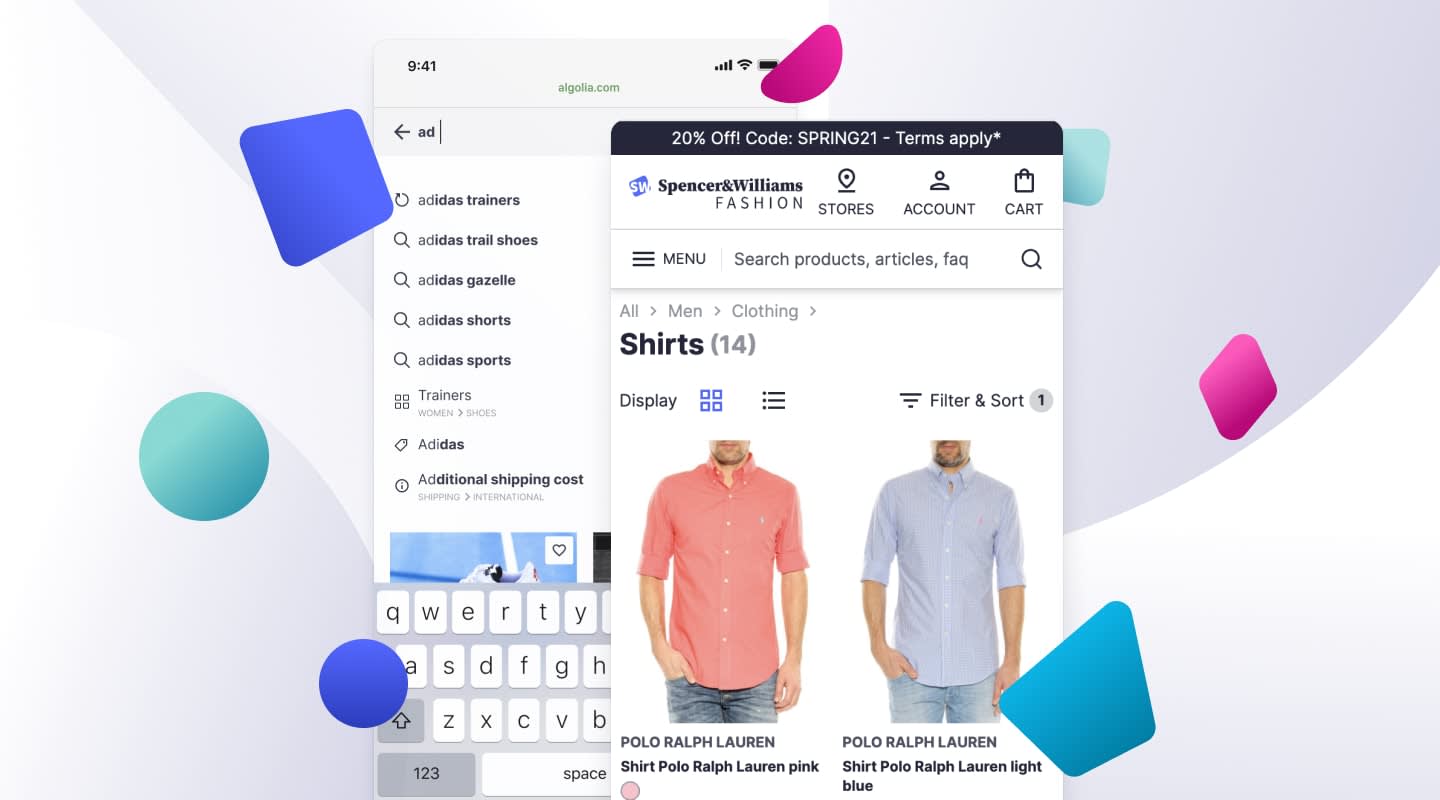

How Algolia Recommend can increase basket sizes and values, and build customer l...
source link: https://www.algolia.com/blog/product/how-algolia-recommend-can-increase-basket-sizes-and-values-and-build-customer-loyalty/
Go to the source link to view the article. You can view the picture content, updated content and better typesetting reading experience. If the link is broken, please click the button below to view the snapshot at that time.
How Algolia Recommend can increase basket sizes and values, and build customer loyalty
Nov 24th 2022 product

Are you already sending Algolia click and conversion events? If so, then you’re ready to start displaying recommended products to your customers.
We’ve all seen and clicked on recommendations while shopping online. As soon as we add an item to the cart, we are prompted to continue shopping for items Frequently Bought Together.
Take a closer look. Those recommendations may have been powered by Algolia Recommend.
Consumers appreciate it when an online store suggests relevant items in a non-invasive and timely manner. Consider Jennifer, who is looking for a bed for her sick dog, Luna. She finds the perfect bed and adds it to the cart. Then she notices a “frequently bought together” section that recommends dog covers, pillows, and other accessories that could comfort a sick dog. Jennifer may also see items that other dog owners have bought for their beloved pets.

This is how Algolia Recommend increases your customers’ basket sizes and values while improving their experience and loyalty.
But how does Algolia know what to recommend? Does Algolia know that Jennifer is a pet owner or that Luna is sick?
The simple answer is no. Algolia doesn’t know anything about Jennifer except that she is following a consumer pattern based on similar purchasing behavior by similar customers. Many customers like Jennifer have searched for, clicked on, and bought similar products..
And while it may sound simple, to mix and match what customers want, it actually takes a lot of data and a careful implementation of AI-driven machine learning to get it right.
Recommend works by collecting user behavior (event-based analytics) and training models to display features such as: Frequently Bought Together, Trending Items, and Those Who Bought This Also Bought. These models have been carefully designed to align with a customer’s original purchasing intent, so as to guarantee a greater likelihood that the customer will continue shopping. As you can imagine, only the most relevant recommendations drive financial growth and customer loyalty.
With Algolia Recommend you can significantly improve your business performance
Before telling you how to set it up, let’s see how the right recommendations can lead to more upsells, cross-sells, and overall customer loyalty (Ask Amazon!)
Gymshark has boosted its revenue by adding Algolia Recommend to its Algolia Search implementation. Gymshark’s success metrics:
- 150% increase in order rate and 32% “add to cart” rate with new users on Black Friday
- 13% higher order rate and 10% higher “add to cart” rate from returning customers
- 1.4 clicks per user vs. 1.1 with previous solution
Gymshark adds Algolia Recommend to handle the crucial Black Friday period. We’ve discovered that training your recommendations models during big shopping events such as Black Friday or Christmas Holidays will help you understand your shoppers’ behaviors in time for the next big event.
Setting up recommendations – all you need to do is start training the model!
Here are the four steps to Recommend.
- Capture user activity (events)
- Send those events data to Algolia
- Enable Agloia Recommend on the Dashboard and have it start generating recommendations in the background
- Display recommendations to your users
Sending quality data
Even though you are already sending analytics events, it’s worth reviewing the first two data-centric steps, since they provide the raw data that will determine the quality of your recommendations.
Steps 1 & 2 are entirely in the control of the customer. Customers build up their analytics dataset by capturing significant user activities (events). This means that you must be careful to capture actions that are “significant” to your business. Of course, purchase history is almost always relevant, but what about the shopping cart? Or category pages? Facets?
Essentially, you want to track all user actions that you believe will have a significant likelihood to lead to a conversion.
The good news is that Algolia comes with an Analytics Dashboard that you can use to test the quality of your analytics data.
Enable recommendations, and you’re good to go
Once you’re sending significant user actions (here’s a big list), then all you need to do is enable recommendations in Algolia’s Dashboard (step 3) and let the machine roll. As you send events, Algolia does the rest – it feeds those events into its machine learning models and generates a robust set of recommendations.
After a short time – could be weeks, depending on the activity of your website – you can start displaying those recommendations to your users (step 4). Here are some powerful ways to leverage recommendations, and an overview on how to display recommendations.
The bottom line
If you can provide great recommendations, ensuring that your customer journey is enjoyable and stress free, you’ll be on your way to building customer loyalty that will transform your business bottom line.
Our powerful Recommend API and AI-driven technology will quickly and seamlessly improve your user’s experience and the conversion rates on your website and mobile applications.
To learn how leading ecommerce retailers leverage the capabilities of an AI-powered recommendations engine to crash their digital merchandising goals, contact us, and let’s get rolling!
Recommend
About Joyk
Aggregate valuable and interesting links.
Joyk means Joy of geeK